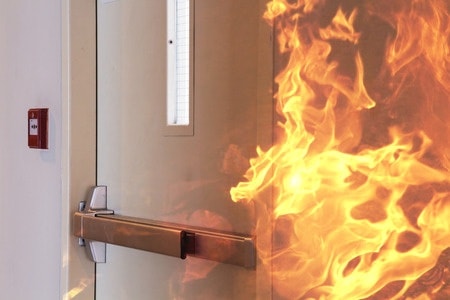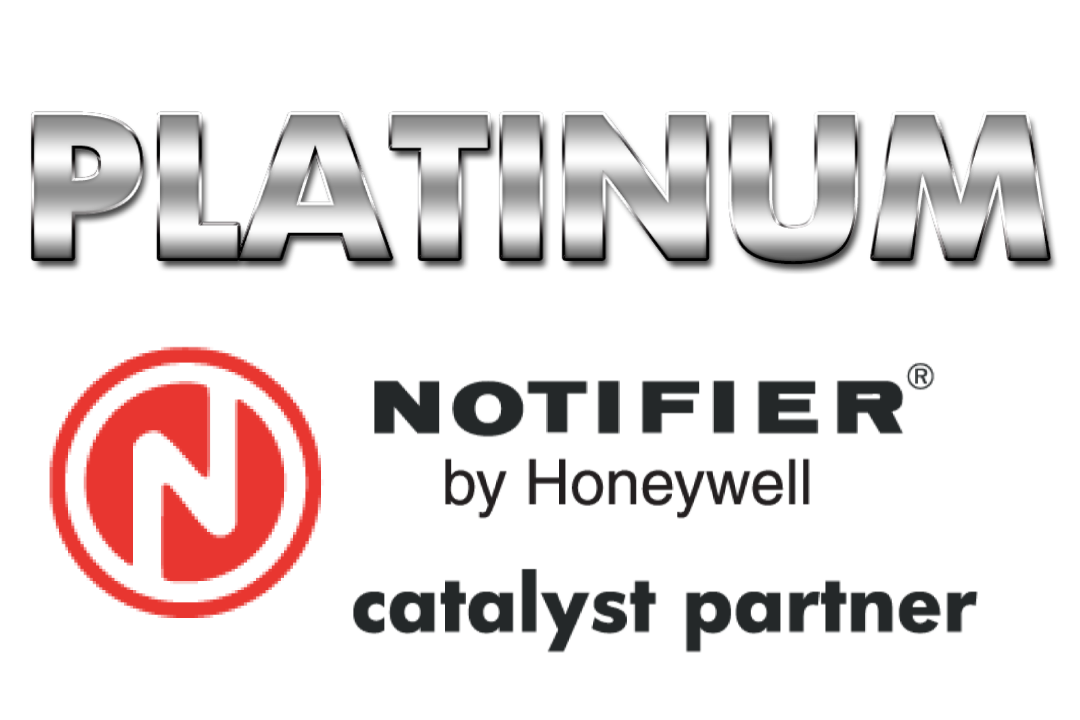
Aspirating smoke detection is a very reliable method of detecting smoke by using a sophisticated detector that recognizes the existence of smoke particles suspended in the air. An aspirating smoke detector (ASD), also called an air sampling smoke detector, will typically detect smoke before that is invisible to the naked eye by recognizing the light scattered by the smoke particles in the sampling chamber. An ASD works by drawing air with a fan through a piping system and into the sampling chamber.
National Fire Protection Association (NFPA) Code Requirements
An ASD system is required to meet National Fire Protection Association (NFPA) codes and regulations, including NFPA 72, the National Fire Alarm and Signaling Code. NFPA 72 requires the sampling holes to be spaced at equivalent configurations of spot smoke detectors, which are spaced at 30 feet with the ability to protect 900 square feet. Requirements for a Standard Fire Detection (SFD) system require maximum transport time of the furthest sampling hole to the ASD be no more than 120 seconds.
ASD systems must also adhere to NFPA 75 and NFPA 76, which are the standards for the Protection of Information Technology Equipment and Fire Protection of Telecommunications Facilities, respectively. NFPA 76 details the regulations of more sensitive smoke detection systems that give early warning and are divided into two categories; the Early Warning Fire Detection (EWFD) system and a Very Early Warning Fire Detection (VEWFD) system.
Regulations for the EWFD reduce the maximum transport time to 90 seconds, and the coverage area for a sampling hole is 400 square feet. Regulations for a VEWFD system are further reduced to a transport time of 60 seconds, with 200 square feet coverage for a single sampling hole.
All ASD systems designed in the US must adhere to these codes which cover the commissioning, installation, and testing of aspirating smoke detection systems.
Components of an Aspirating Smoke Detector
An ASD system consists of three main components; the network of sampling pipes, the aspirating smoke detector, and the exhaust pipes.
Sampling Pipes of an ASD
The network of sampling pipes collect air through the sampling holes and deliver it to the detector to test for the presence of smoke particles. The network of sampling pipes can be made of plastic, copper or brass, and may be installed with single or multiple pipe configurations. Single pipe configurations may result in delayed transport time with one pipe extending throughout the covered space connecting to the detector. Multiple pipe configurations allow for either horizontal or vertical placement, and versatility in placing pipes in concealed locations.
Types of Aspirating Smoke Detectors
The aspirating smoke detector is available with different detection technologies, although all contain similar equipment. The three types of technologies are laser based, cloud chamber and dual sourced.
Laser based systems are available in two variations, one with a filter and one without. In a filtered laser system, air passes through the filter system first to remove large particles, then is moved past the laser which measures the scatter of smoke particles caused by the laser light. A non-filtered laser system is also referred to as particle counting, with air passing in front of the laser without any filtration. The number of particles are counted by a sophisticated photo collector, and will alert if sufficient particles of smoke are present.
The cloud chamber method of an ASD utilizes a sealed chamber holding dense water vapor that causes a reaction when interacting with smoke particles. This reaction causes the particles to ionize and become visible where the chamber will detect the mist and smoke particles.
A dual source sensor is the third method of technology used in an ASD, utilizing a blue LED light to detect very low levels of smoke with an infrared laser that helps to identify dust particles preventing false alarms.

ASD Exhaust Piping
The exhaust system is a key component as the air pressure inside and outside of the pipes make a difference in how the air is transported to the testing chamber, and can affect the transport time. Sophisticated software is used to determine transport time, usually with the assumption that the air pressure is the same in the pipes as it is in the room the system is mounted. The exhaust air must be piped into the same room that is being sampled to eliminate differences in air pressure.
Several Benefits of an ASD
An aspirating smoke detection system provides several benefits which include the following:
-
- Provides an early warning of smoke before it is even visible to the human eye
- An ASD works even when the air handling system is not working
- Works well even in low air damper environments
- Easy accessibility for service and testing remote areas such as lofty ceilings without climbing ladders to maintain smoke detectors
- ASD systems are compatible with addressable and conventional fire alarm systems
These are just some of the many benefits to an aspirating smoke detection system, which can provide very early warning of smoke or fire, saving lives and property.
High Rise Security Systems with SMG Security Holdings is an experienced fire safety consulting firm with experience in ASD and all smoke and fire prevention systems. We provide total safety to all types of commercial properties including low-rise, high-rise, campuses and mass complexes. HRSS/SMG is a leader in fire and safety prevention, providing total system design compliant to all codes and regulations, including local municipalities including the Chicago area.
Our experienced designers utilize AutoCAD software to provide a detailed layout of your ideal fire alarm system with the best names in the business for fire alarm systems and control panels such as NOTIFIER™️ by Honeywell. We conduct testing, maintenance and monitoring 24/7/365 for total safety of your building and all occupants.
HRSS/SMG is a leader in fire alarm safety, helping building owners and contractors to develop a total fire safety plan in any type of structure. Contact us today to learn more about our comprehensive fire and safety services, and to learn more about the early warning protection from an aspirating smoke detection system.


